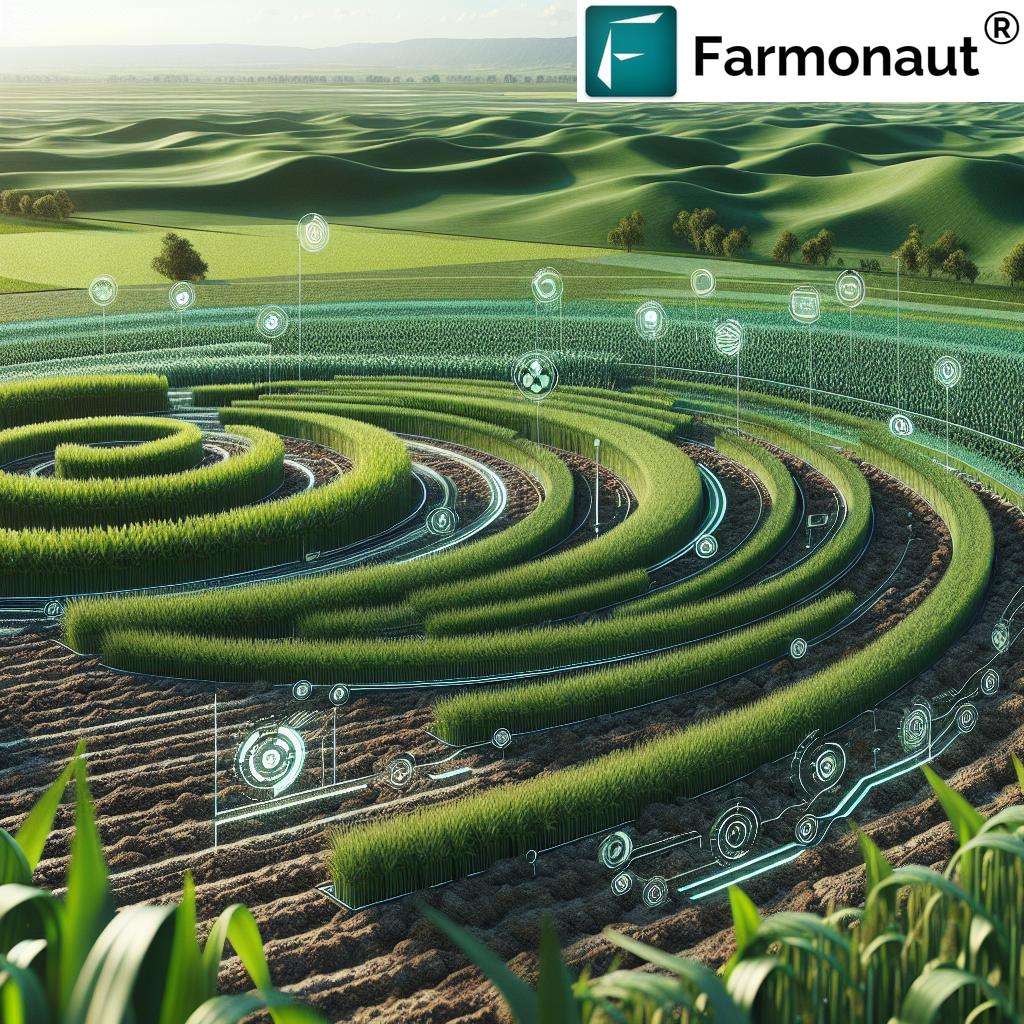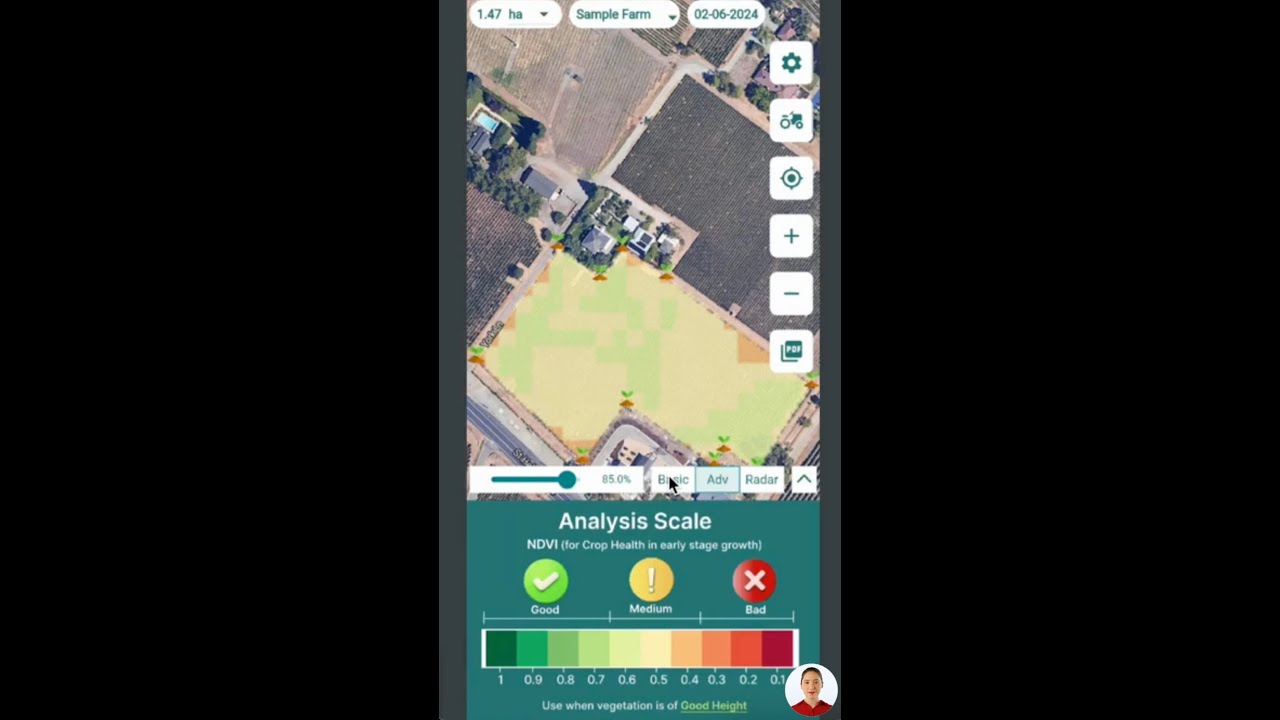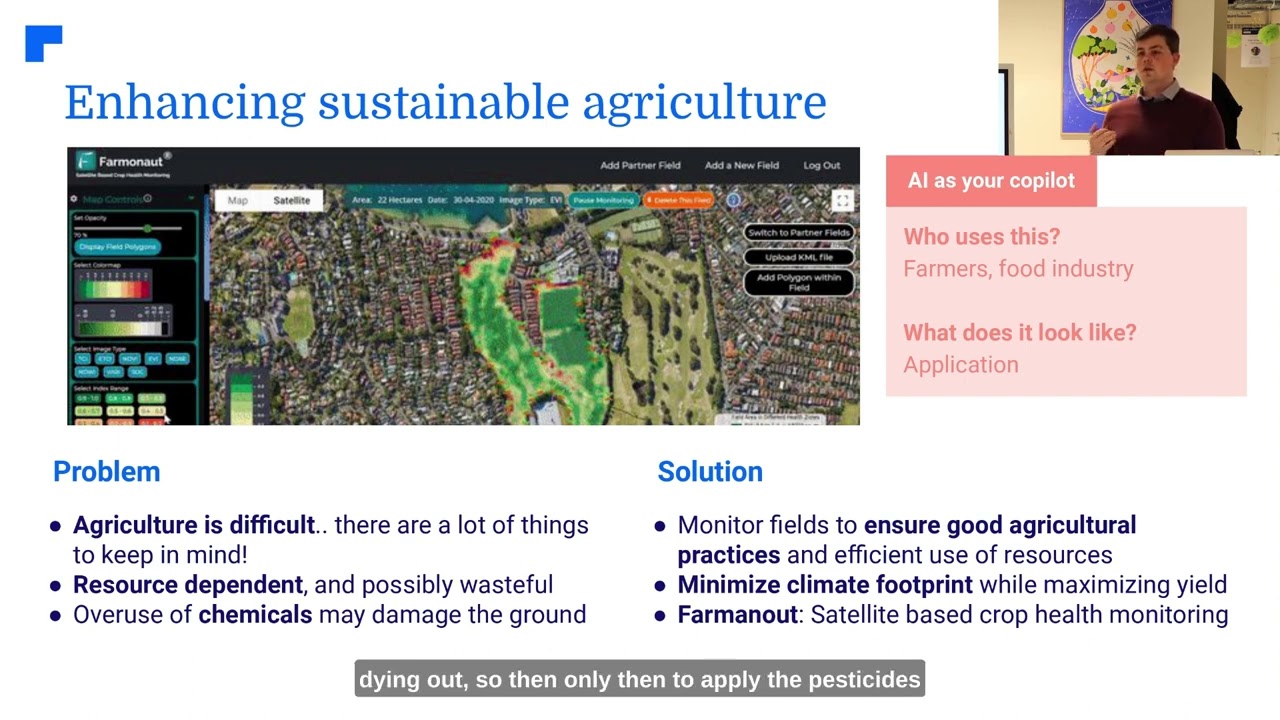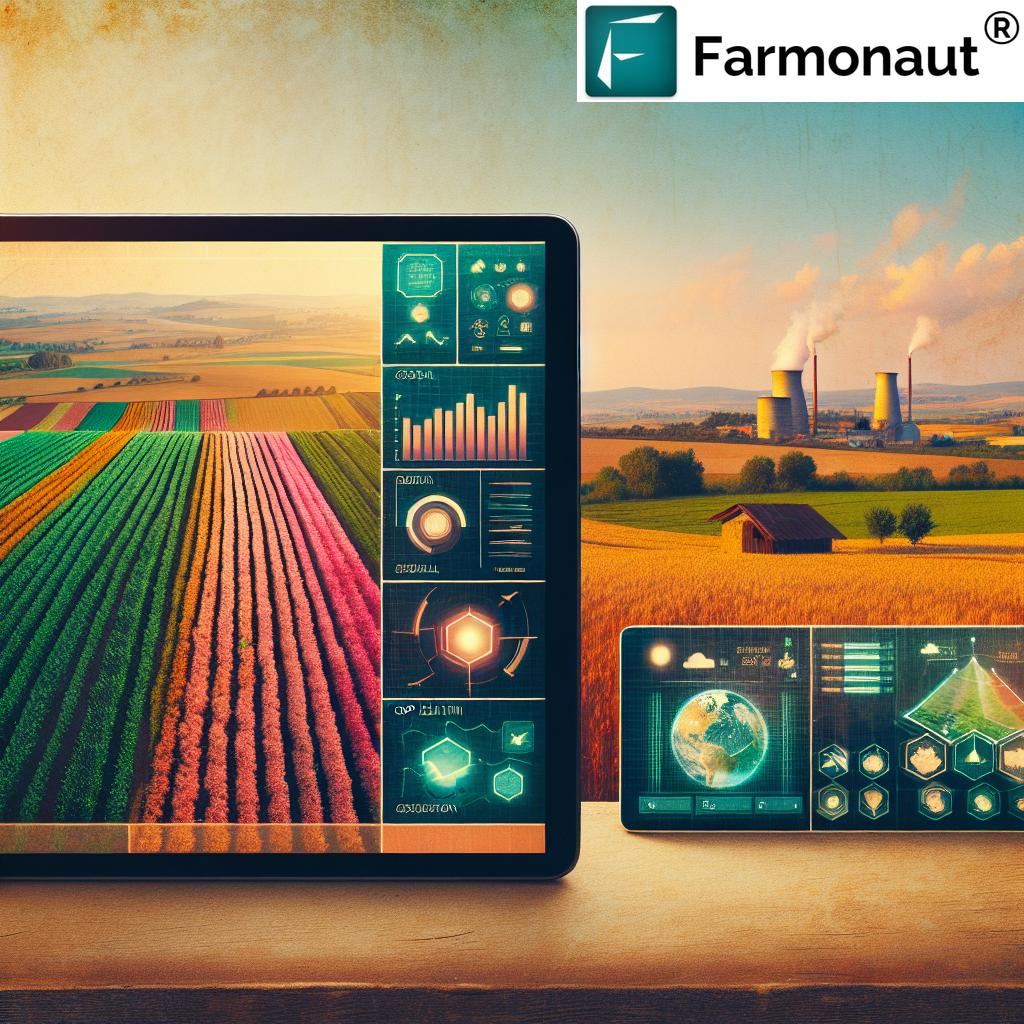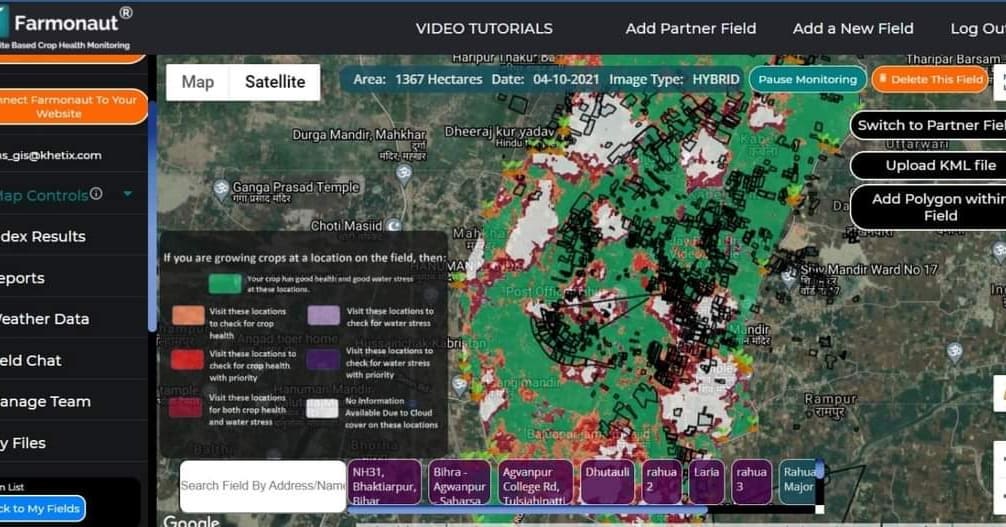Nutrient Efficiency Hacks: Skyrocket Your Yields Fast!
Summary: The Importance of Nutrient Efficiency in Agriculture
At the core of sustainable food production lies nutrient efficiency in agriculture. We recognize that maximizing crop yields, enhancing forest growth, and safeguarding our ecosystems require a balanced and optimal approach to nutrient management. Embracing innovative strategies and technologies ensures efficient use of key nutrients—nitrogen, phosphorus, and potassium—providing our crops and forests with the nourishment they need while minimizing environmental impacts such as runoff and leaching.
In this comprehensive guide, we delve into the science and practical techniques behind nutrient efficiency. We’ll explore factors that influence effective nutrient use, game-changing hacks to improve soil health, and the role of precision nutrient management in transforming yields. By integrating advanced solutions like Farmonaut’s satellite-driven insights, we can unlock new levels of productivity, sustainability, and economic gain for farmers, agribusinesses, and the global food system.
What is Nutrient Efficiency and Why Does It Matter?
Nutrient efficiency refers to how effectively we use essential elements to maximize crop yields and sustainable forest growth, while minimizing environmental impacts. Achieving high efficiency means our plants receive optimal nourishment for healthy development and robust output, yet we avoid unnecessary applications that could harm soil, water, or the broader ecosystem.
- Increasing yields: With precise nutrient management, we deliver what our crops need—no more, no less—resulting in bigger harvests.
- Protecting soil health: Efficient use of fertilizers preserves organic matter in soil, fertility, and the natural balance vital for long-term agriculture.
- Reducing pollution: By reducing leaching, runoff, and volatilization, we prevent excess nutrients from reaching water bodies, supporting cleaner ecosystems.
- Boosting profitability: Less waste and better yields equate to higher returns for us and our farming communities.
Let’s explore how to turn nutrient management into a powerful tool for sustainable crop yields and better agricultural outcomes.
Understanding Nutrient Efficiency: The Foundation of Sustainable Yields
To improve our harvests, protect the planet, and ensure food security, mastering the art and science of nutrient efficiency in agriculture is non-negotiable.
The Essential Elements: Nitrogen, Phosphorus, and Potassium
The three primary nutrients—nitrogen (N), phosphorus (P), and potassium (K)—fuel plant growth:
- Nitrogen supports leafy, vegetative growth, enzyme function, and protein synthesis.
- Phosphorus is crucial for root development, flowering, seed formation, and energy transfer.
- Potassium regulates water balance, helps plants withstand stress, and improves overall quality and disease resistance.
Additional elements like calcium, magnesium, and micronutrients also play critical roles, but N, P, and K are the backbone of fertilizer application worldwide.
How Nutrient Efficiency Works:
Nutrient efficiency measures how much applied fertilizer is actually absorbed and used by crops (uptake efficiency), versus what is lost to the environment via runoff, leaching, or atmospheric escape.
It depends on…
- Soil conditions: Soil health affects nutrient availability—only what’s in the proper form, and in reachable zones, benefits our plants.
- Crop type and rotation: Some crops are natural soil fertility boosters; others deplete key elements quickly.
- Weather patterns: Rainfall and drought influence the mobility and retention of nutrients in soils.
- Farming practices: Are we applying nutrients at the right time, place, and amount?
The Risks of Poor Nutrient Efficiency
- Reduced crop yields and stunted plant growth
- Increased resource costs (wasted fertilizers)
- Soil degradation and loss of organic matter
- Water pollution from nutrient runoff and leaching
- Disturbed ecosystem balance and more greenhouse gas emissions
Our Goal: Achieving High Nutrient Efficiency for Sustainable Agriculture
We must aim for maximum nutrient uptake by crops while minimizing losses. Precision nutrient management and innovative farming technologies are our best allies.
Key Factors Influencing Nutrient Efficiency: From Soil to Weather
For us to improve nutrient efficiency, we must understand the factors shaping it. These can be divided into soil, crop, climatic, and management variables.
1. Soil Health and Structure
Healthy soils are alive with beneficial microbes, earthworms, and balanced organic matter content. When soil pH is in the optimal range (often 6-7), nutrient availability is maximized for our crops. Poorly structured or compacted soils lock away nutrients, while good organic matter ensures retention and slow release of these precious elements.
- Microbial activity enhances nutrient cycling and helps break down fertilizers for plant absorption.
- Properly balanced and maintained soils allow for greater, more efficient nutrient uptake.
2. Crop Selection and Crop Rotation Benefits
Choosing appropriate crops and implementing crop rotation bolster nutrient cycling and reduce our dependence on synthetic fertilizers. Leguminous crops, for instance, fix atmospheric nitrogen, enriching soils for future planting.
- Crop rotation interrupts pest cycles, builds organic matter, and keeps soils balanced in nutrient content, enhancing overall fertility and sustainability.
3. Climate Conditions and Weather Patterns
Excessive rainfall may cause leaching of nutrients; drought conditions restrict root growth and reduce nutrient uptake. Understanding our local weather patterns is vital for optimizing application timing and methods.
- Using real-time weather forecasts helps us adapt fertilizer application schedules and methods.
4. Management Practices and Technology Use
Adoption of precision agriculture techniques, conservation tillage, timely fertilizer application, and use of cover crops can dramatically lift nutrient use efficiency and ensure long-term soil health.
- Farmonaut’s satellite-driven apps empower us with actionable, field-specific nutrient and crop health data.
5. Fertilizer Types and Application Methods
- Controlled-release fertilizers (CRFs) and nanotechnology-based fertilizers further reduce losses, matching release rates to plant needs.
- Efficient application methods, like fertigation or foliar spraying, deliver nutrients directly where plants need them most.
Strategies to Enhance Nutrient Efficiency: Precision Hacks for Better Yields
Let’s map out the top, proven solutions for skyrocketing your yields while minimizing environmental impacts and costs. From digital transformation to soil-first techniques, here’s what works in practice:
1. Precision Agriculture & Smart Nutrient Management
The backbone of efficient agriculture today is precision nutrient management. Farmonaut’s platform brings these powerful approaches to your fingertips, using satellite data, AI, and smart field mapping:
- Satellite and AI crop health monitoring: Real-time detection of nutrient deficiencies or excess, tailored fertilizer recommendations, and irrigation advice (see the Large Scale Farm Management tool for enterprise solutions).
- GPS-guided application: Variable rate systems prevent over- or under-application—every area receives the right dose.
- Remote sensing and geospatial analytics: Identify field variability and adjust actions proactively (explore our API access and API docs).
2. Controlled-Release Fertilizers (CRFs): Smarter Nutrient Supply
CRFs are designed to release nutrients gradually, at a controlled rate, over weeks or months—mirroring plant uptake needs and reducing leaching or volatilization.
- This approach means a steady nutrient supply and less risk of environmental degradation.
- Lower application frequency = reduced labor and fuel.
3. Nanotechnology in Fertilizers
Nanofertilizers leverage materials at the nano-scale, increasing bioavailability and ensuring more nutrients reach plant cells. This enables:
- Better nutrient penetration and absorption
- Lower losses to the environment
- Reduced chemical load—for people and ecosystems
Innovation in traceability also ensures safe, transparent use of advanced fertilizer types across food supply chains.
4. Fertigation and Foliar Spraying: Targeted Nutrient Application
Fertigation delivers dissolved nutrients via irrigation, ensuring roots get immediate, even nourishment. Foliar spraying applies nutrients directly to leaves, bypassing soil blocks and delivering rapid correction of deficiencies.
- Boosts efficiency and responsiveness to plant needs
- Reduces total fertilizer required
5. Cover Crops and Crop Rotation: Building Soil Naturally
Cover cropping—growing specific plants between cash crops—enhances soil structure, adds organic matter, and boosts nutrient cycling. Crop rotation brings similar advantages, improving soil fertility without synthetic inputs.
- Reduces erosion, compaction, and disease/pathogen build-up
- Enhances soil water retention and microbial health
6. Soil Amendments: Tuning pH and Soil Properties
- Lime corrects acidic soils, optimizing pH for available nutrients
- Gypsum improves structure and permeability in problem soils
Amending with organic compost or green manure also boosts organic matter, feeding beneficial microbes for improved nutrient transformation and uptake.
7. Smart Sensors and Data-Driven Farming
Farms that adopt soil moisture, weather, and leaf nutrient sensors stay ahead of deficiencies and excess, applying nutrients with precision. Combining these with Farmonaut’s real-time advisories means every decision is data-backed—no guesswork, just productive, sustainable yields!
- Automated alerts help us intervene at the exact moment when crops require support.
Get Actionable Insights for Your Farm:
- Try our Crop Plantation & Forest Advisory platform to receive personalized, AI-powered recommendations for nutrient application, rotation, and more!
- Fleet management tools help large operations optimize machinery for efficient fertilizer delivery across every field section.
- Monitor your farm’s climate impact with carbon footprinting and ensure your practices support ecosystem health.
Comparative Table: Impact of Nutrient Management Techniques
To help us choose the most effective strategies for our land, here’s a comparative look at different nutrient management techniques and their estimated benefits for soil health, nutrient efficiency, crop yield, and sustainability.
| Technique | Estimated Nutrient Efficiency Improvement (%) | Estimated Crop Yield Increase (%) | Impact on Soil Health | Environmental Sustainability Score |
|---|---|---|---|---|
| Precision Application (GPS, Remote Sensing) | 15-25% | 10-20% | High | 🟢 Green |
| Organic Amendments (Compost, Manure) | 8-15% | 5-12% | Very High | 🟢 Green |
| Cover Cropping & Crop Rotation | 12-20% | 8-18% | Very High | 🟢 Green |
| Smart Sensors & Data-driven Farming | 18-30% | 15-25% | High | 🟢 Green |
| Conventional (Broadcast Fertilizer Application) | 0-5% | 0-5% | Low | 🟡 Yellow |
For best results, combine digital monitoring, precision application, and soil-focused techniques for a truly sustainable transformation!
Leveraging Farmonaut Technologies for Nutrient Efficiency
Farmonaut is advancing nutrient efficiency with affordable, accessible, satellite-based, and AI-driven tools. We help farmers worldwide implement data-backed practices for optimal yields with less waste.
- Satellite-based crop health monitoring: Track vegetation indices, soil moisture, and early stress/disease signals across your fields to target interventions.
- Jeevn AI Advisory: Receive expert, hyperlocal nutrient management strategies and weather risk insights that are unique to your farm’s present and forecasted conditions.
- Blockchain-based traceability: Ensure every input, from seed to fertilizer, is verifiable for supply chain confidence and market access.
- Resource & fleet management: Maximize logistics, reduce carbon emissions (carbon footprinting), and eliminate operational waste.
- Real-time data & alerts: From satellite insights to weather notifications, act swiftly for precision nutrient management.
- Scalable, cost-effective solutions: Farmonaut’s web, mobile apps, and APIs (get started here) make smart agriculture possible for everyone—from individual smallholders to large-scale agribusiness.



Environmental and Economic Benefits of Improving Nutrient Efficiency
Why Prioritize Nutrient Efficiency in Agriculture?
Our collective benefits grow remarkably when we focus on nutrient efficiency:
- Environmental Protection: Reducing nutrient runoff and limiting leaching keeps local rivers, lakes, and groundwater cleaner.
- Food Security: Maximizing plant nutrient uptake feeds more people with fewer resources.
- Profitability: Efficient fertilizer use lowers input costs and boosts overall returns.
- Long-term Soil Health: Practices that build organic matter in soil and maintain structured, productive farmlands ensure future generations can thrive.
- Regulatory Compliance: Adhering to new standards is easier with digital tracking and transparent, traceable records of every action.
- Sustainability Score: Every improvement we make reduces our agricultural carbon footprint (see how here), supporting a healthy global ecosystem.
Visit Farmonaut’s crop plantation & forest advisory page to increase your sustainability impact and market appeal.
Challenges and Considerations: What To Watch Out For
Modern agriculture faces several hurdles on the road to optimal nutrient efficiency. By being aware, we can prepare for and overcome each one:
Knowledge Gaps & Farmer Education
- Not every farmer has access to information on best management practices for efficient nutrient use. Mobile and web-based tools bridge this gap by delivering up-to-date, actionable knowledge.
Economic Constraints & Technological Investment
- The upfront cost of precision agriculture tools may seem high. Subscription-based, scalable solutions (like those from Farmonaut) lower the barrier and improve ROI rapidly.
Policy and Regulatory Challenges
- Inconsistent or weak environmental policies may delay mass adoption of efficient practices.
Local Soil and Weather Variability
- Success depends on customizing solutions to local soils, crops, and climates—underscoring the need for field-specific, real-time data.
Balancing Innovation With Tradition
- Integrating high-tech tools with farmers’ traditional wisdom and regional agronomic practices delivers the best outcomes.
By acknowledging these challenges, we can proactively seek support and leverage technology to drive progress in nutrient efficiency.
Frequently Asked Questions (FAQs)
1. What is nutrient efficiency in agriculture?
Nutrient efficiency in agriculture refers to using fertilizers and soil amendments in a way that optimizes plant absorption (uptake), maximizes crop yields, and minimizes losses to the environment such as leaching or runoff.
2. How does precision nutrient management improve crop yields?
Precision nutrient management uses digital tools (e.g., Farmonaut’s satellite-based systems), GPS, and AI to tailor applications to specific field conditions. This ensures that each crop section receives exactly what it needs for health and optimal growth, boosting yields and reducing waste.
3. What role do cover crops and crop rotation play in soil health?
Cover crops and crop rotation increase organic matter in soil, enhance nutrient cycling, break pest/disease cycles, and improve soil structure. This reduces reliance on synthetic fertilizers and supports sustainable yields.
4. How can Farmonaut help optimize fertilizer use on my farm?
Farmonaut provides real-time, field-specific data on crop health and soil moisture. By using our apps, farmers can apply fertilizers and water where and when it’s truly needed, reducing environmental impact and increasing yield potential.
5. What is the difference between controlled-release and conventional fertilizers?
Controlled-release fertilizers (CRFs) release nutrients slowly over time, matching crop uptake and reducing losses, whereas conventional fertilizers deliver nutrients all at once, leading to greater leaching and potential environmental harm.
6. How do innovative farming technologies affect long-term sustainability?
By enabling smarter decision-making, improved efficiency, and reduced input waste, innovative technologies like Farmonaut’s platform help ensure lasting soil fertility, increased crop yields, and a smaller environmental footprint.
7. How can I access Farmonaut’s services?
You can use Farmonaut’s Web App, Android app, or iOS app for field monitoring and AI-powered recommendations.
Quick app access here.
Conclusion: The Future of Sustainable Crop Yields is Efficient, Precise, and Accessible
In today’s fast-changing landscape, it’s not enough to simply produce more—we must do so wisely and respectfully, working with nature, not against it. By investing in nutrient efficiency, adopting digital tools, and reimagining our field management practices, we can:
- Achieve higher, more resilient yields
- Protect soil health for generations
- Minimize fertilizer waste and input costs
- Strengthen our farms’ economic viability
- Protect our environment against runoff, leaching, and climate change risks
Let us lead the way, combining traditional knowledge with the best in modern technology—like the real-time monitoring, AI-powered advisory, and scalable farm management from Farmonaut. Together, every farm, plantation, and forestry project can become a model for efficiency, productivity, and sustainability.
Ready to skyrocket your yields and become an environmental champion of your region?
Explore Farmonaut’s game-changing tools and unlock your farm’s true potential:
Together, let’s nourish, preserve, and regenerate our soils, crops, and forests!


